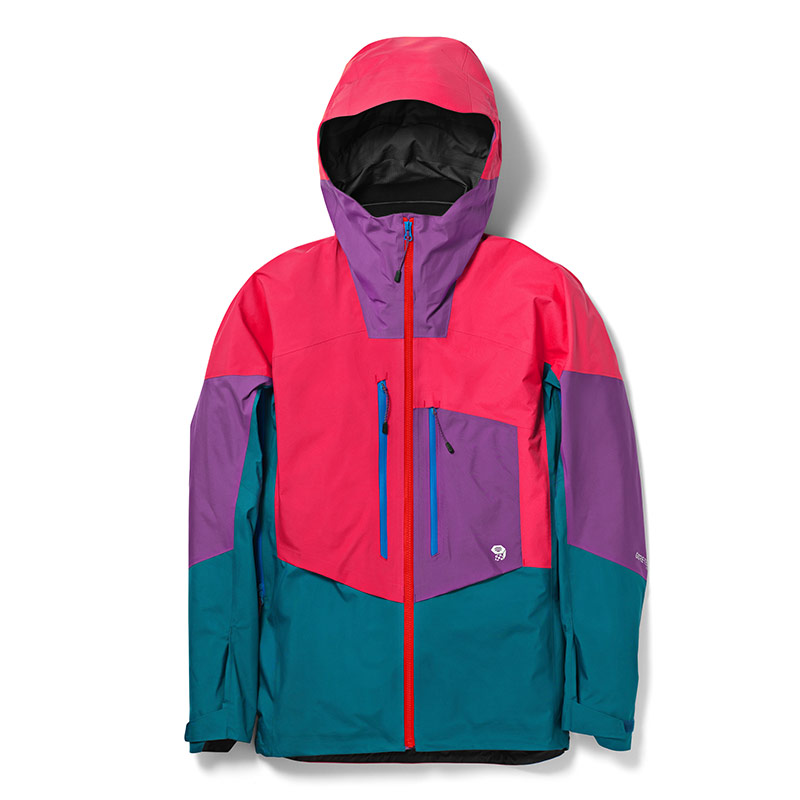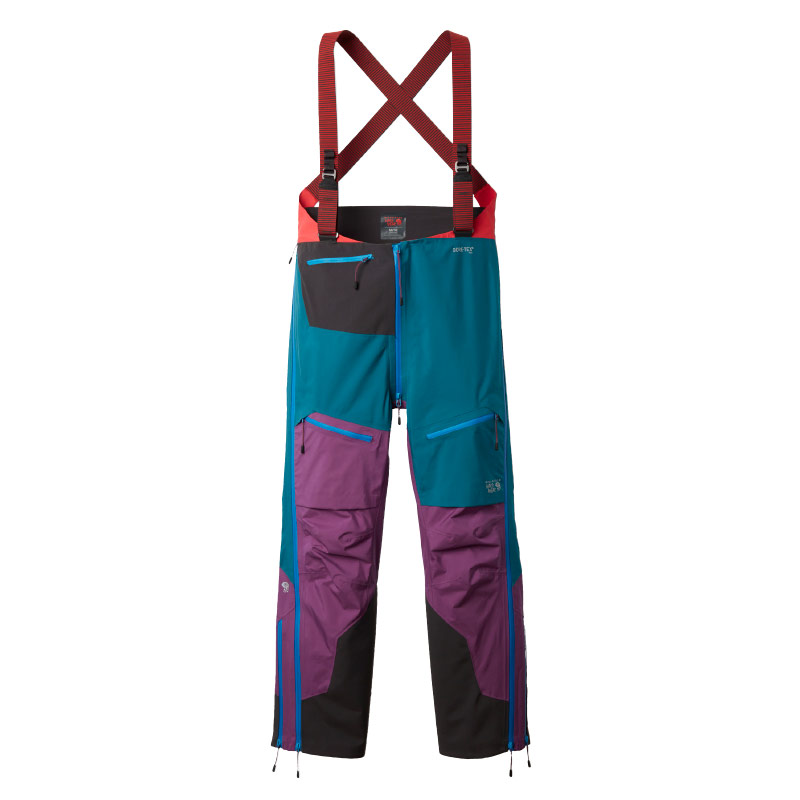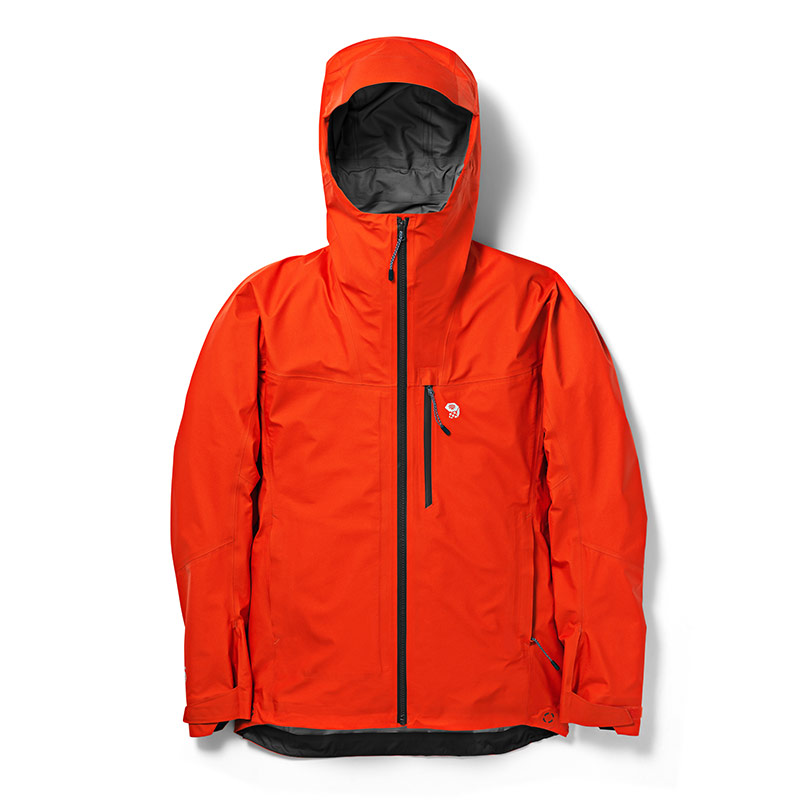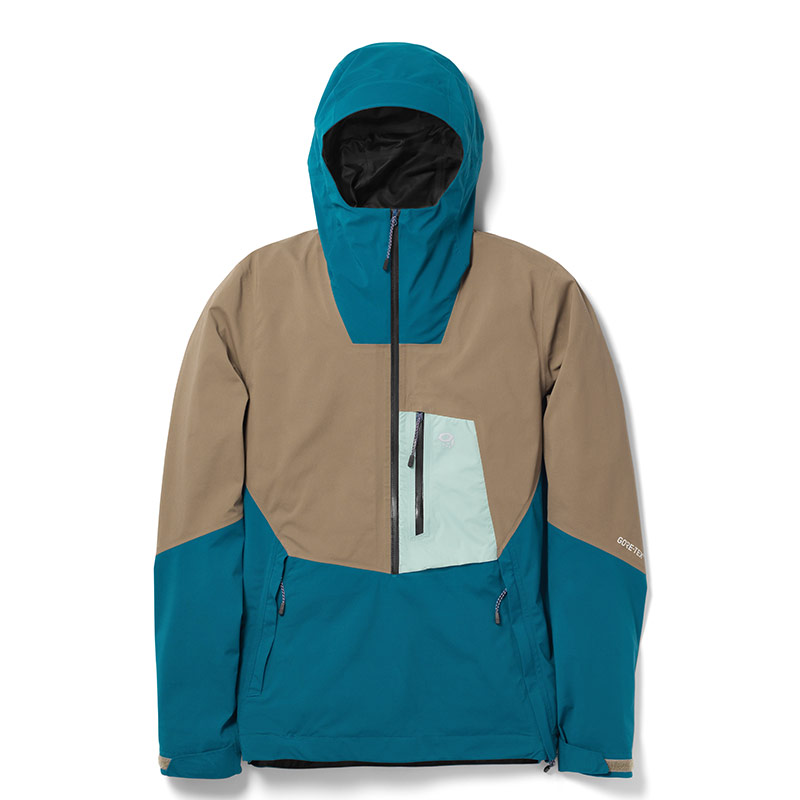As we took the next few steps upwards, our breath visible under the light of our headlamps, we caught our first glimpse of the summit. Still some 1,600 feet below the crest of Pico de Orizaba, the highest mountain in Mexico, we needed to pace ourselves. Stopping briefly for water, we stared up as first light reached the Jamapa Glacier, an icy 35-degree slope laden with crevasses. A good reminder of how small we are.
Hours earlier, we started the summit push from our high camp just after 2 AM and had just passed the crux of the climb, a slick section called the Labyrinth. We had endured freezing rain and high winds for nearly five hours and 3,000 feet of slowly marching upward. Orizaba, at 18,491 feet, is the third highest mountain in North America, and a challenge for even the hardy. The six of us had gathered two days earlier at the rental car office at the airport, beaming with excitement. A group of friends from all over the US, we came together to tick a bucket list climb and test some of Mountain Hardwear’s newest products.
Mountain Hardwear introduced an entirely new line of sustainable technologies in December, by far its most environmentally responsible collection in the company’s 25-year history. Before the trip, I had a chance to sit down with the design team to learn more about the sourcing and history behind the new Exposure/2 collection. Mountain Hardwear was inspired by a belief that sustainability is opportunity, not just an obligation. From product designers all the way up to the company’s president, the team bought into the idea and invested in research, design and testing of new recycled materials, solution dyes and sustainable waterproofing.
Mountain Hardwear’s commitment to sustainable technologies runs the gamut, from apparel, to packs and tents. Every one of its major upcoming products launches has sustainability baked in, including the Exposure/2 collection — which includes a flashy pair of bibs and a jacket. This combo was made possible through a rekindled partnership with materials developer Gore-Tex.

The collection is made with a three-layer Gore-Tex Pro Shell fabric that’s waterproof, windproof and breathable. Both the jacket and bibs have an improved ability to stretch, striking a balance between comfort and consistent weather protection, perfect for extended activities like summiting Orizaba with extreme weather. The jackets were designed for the demands of backcountry skiers, mountaineers, alpinists, guides and serious outdoor enthusiasts.
Despite being undeniably burly and durable, the most impressive parts of the Exposure/2 Pro shell and bib are hard to spot with the human eye. In one colorway that references the brand’s 1993 color palette, the jacket and bib feature solution-dyed fibers instead of the traditional dying process, in which individual strands of yarn are dyed using a large volume of water and chemicals. Solution dyeing involves mixing pigment directly into the plastic pellets before it is extruded into yarns. The output is a deep, permanently colored fiber that can be woven into fabrics without wasted water or dyes.
The solution-dye process that Mountain Hardwear chose to utilize requires 89% less water, 63% fewer chemicals and generates 60% fewer CO2 emissions than traditional dyeing while creating colors that last longer. After Mountain Hardwear ran the numbers, the process was an obvious choice. The Exposure/2 collection features some colorways that are not solution dyed and instead are made using 100% recycled nylon, further reducing the environmental footprint of the collection.
“The incorporation of recycled and solution dyed textiles has the potential to significantly lower the environmental impact of making Gore-Tex garments,” said Bernhard Kiehl, Gore Fabrics Sustainability Leader. “Our Life Cycle Analysis indicated that a long and useful life is the single most important factor in measuring sustainability. Solution dyeing partially addresses this finding, as the process produces improved durability and lasting color.”
Mountain Hardwear’s push for sustainability goes further with the REI-exclusive Exposure/2 Paclite Pullover styles where the brand introduces a Durable Water Repellant (DWR) treatment free of perfluorinated compounds. This technology, known as C0 DWR, eliminates the persistent toxin associated with the carbon chemistry of C8 or C6 DWR, which have long been industry standards. “As a garment’s first line of defense against precipitation, DWR treatments are essential to the performance of high-quality outerwear,” said Steve Adams, Mountain Hardwear’s Senior Outerwear Product Line Manager. “However, until recently, those benefits came with a significant environmental cost: the use of perfluorinated compounds, inorganic substances that accumulate in the environment. By eliminating PFCs, we’re delivering performance without the environmental impact.”
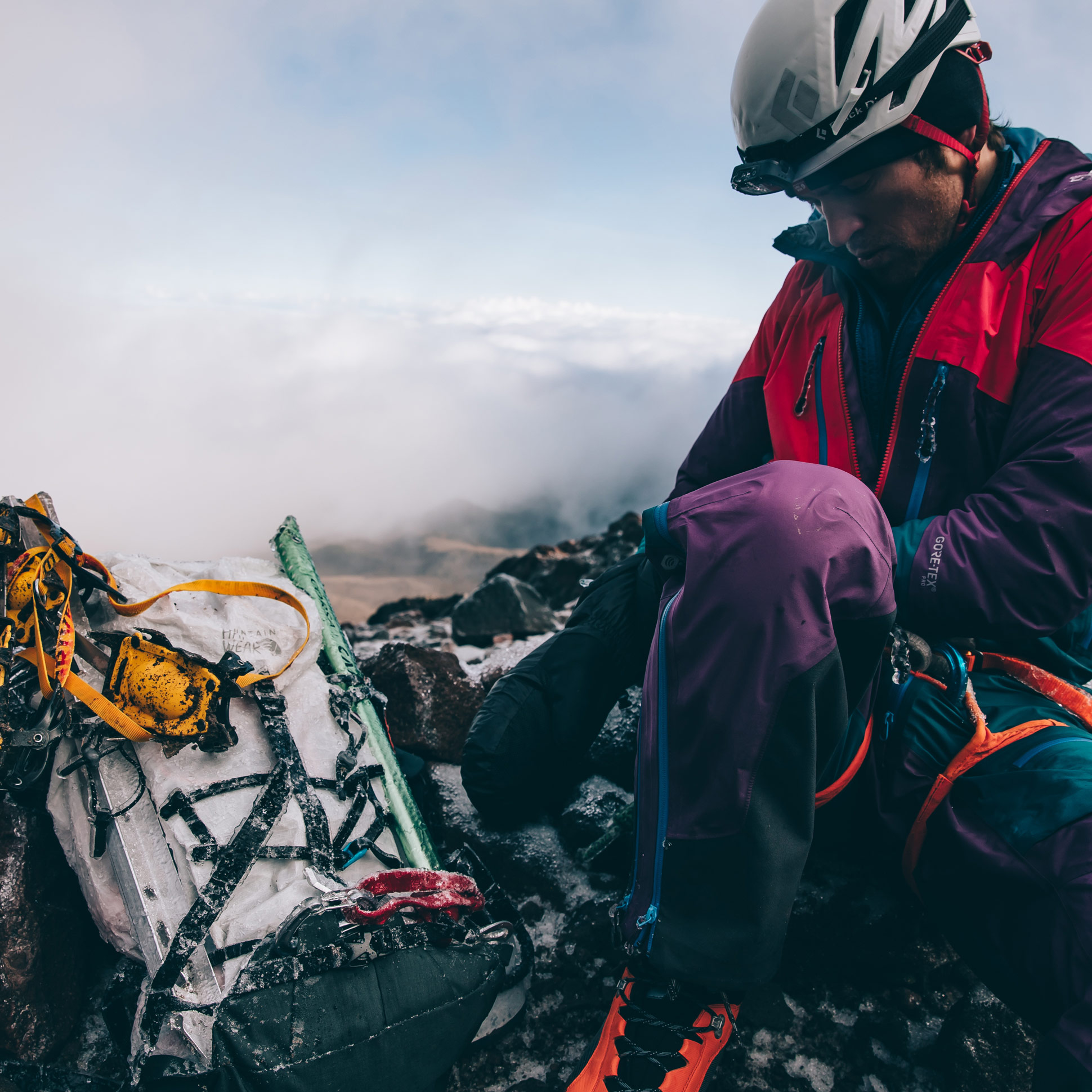
On the five day trip to Mexico, we had the opportunity to test prototypes of products coming down the pipeline in spring 2019, including new Trango tents, Alpine Light and Scrambler packs and Phantom sleeping bags. Curious how these new, environmentally responsible materials would hold up, we asked Peter Valles, VP of Design and Brand. “These are some of the newest materials available to the market. We simply chose to work with the most sustainable options available to us, from Bluesign-approved, recycled and solution-dyed fabrics to tent materials made without toxic flame retardants.”
As part of Mountain Hardwear’s redesign of its entire equipment line, the brand has taken a stand against the use of fire-retardant chemicals in tents, choosing not to apply toxic compounds to all of its shelters, including base camp, expedition and backpacking tents. “The tent standard that necessitates the use of fire retardant chemicals — which are often highly toxic — is based on a rule developed to protect against highly flammable, paraffin-coated cotton circus tents decades ago” explained Joe Vernachio, Mountain Hardwear’s president. “We’re challenging this outdated standard in the interest of sustainability and our consumer’s health. We are eliminating its use from all future Mountain Hardwear tents.”
The launch of Exposure/2 also celebrates the 25th anniversary of Mountain Hardwear and is a homage to the original Exposure jacket, which launched 25 years ago. While the collection embraces the heritage of Mountain Hardwear, it is mostly focused on the future. With this new line, the brand shows its focus on the emerging generation of climbers who appreciate performance and style, combined with responsible ethics in sourcing and manufacturing. “Our products will always be technically focused, with a fresh and youthful spirit,” said Steve Adams.
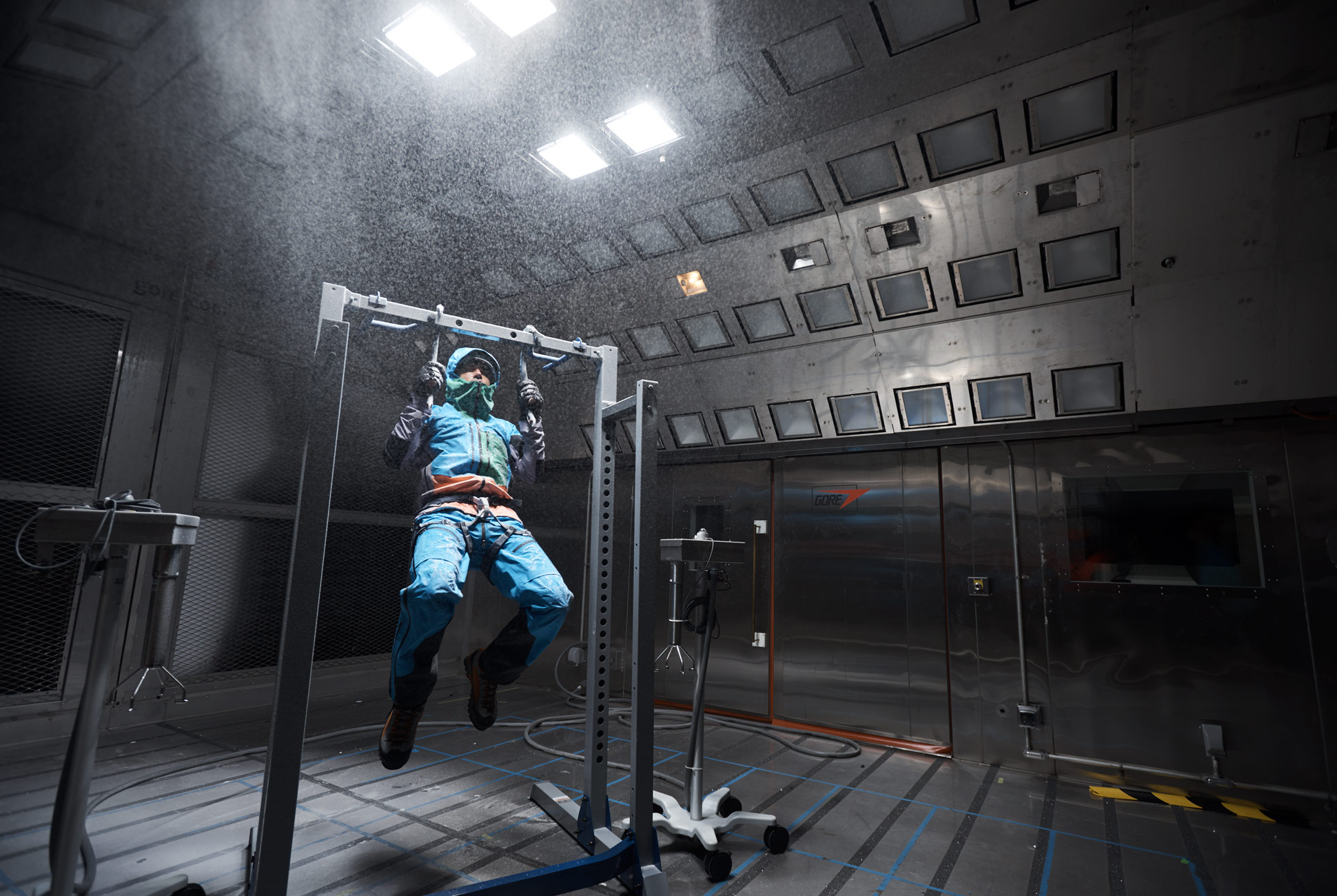
Driven by a philosophy of environmental optimism, the team designed the Exposure/2 collection with some of the most sustainable fabrics and dyes available. The new collection references the 1993 color palette with bold and fun colorways. For those looking for a high-performance and responsibly made shell for alpine environments, the Exposure/2 is your top choice.
In the end, whiteout conditions on the Jamapa Glacier and nausea for a couple members of the team turned us around. The summit of Orizaba, a monolith of rock and ice, will have to wait for another day. With cold hands and wet toes, we carefully descended the same path we had come. This moment will stick with me. I’ll use it as a reminder to respect the earth – it’s the only one we have.


